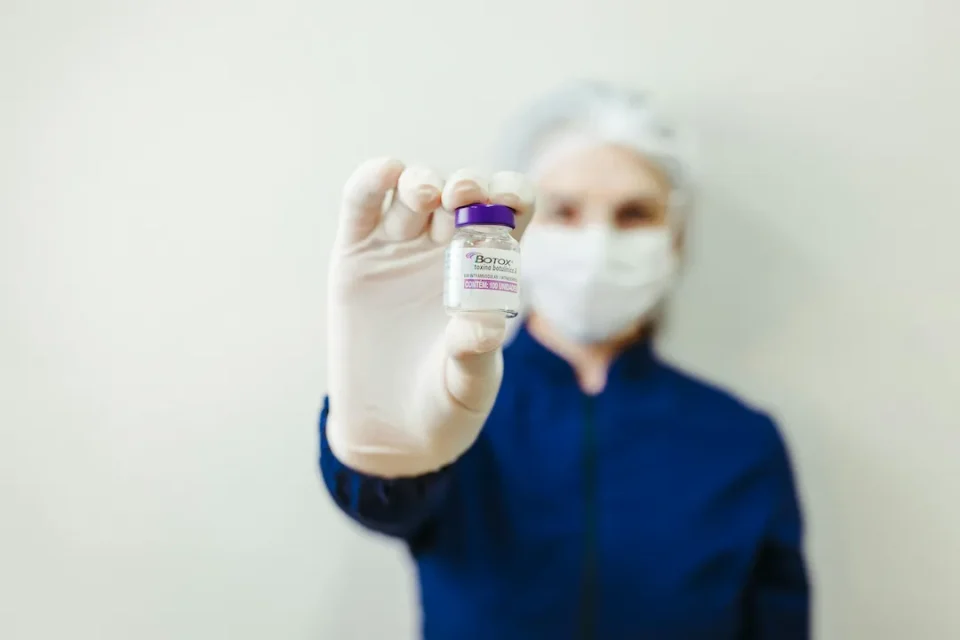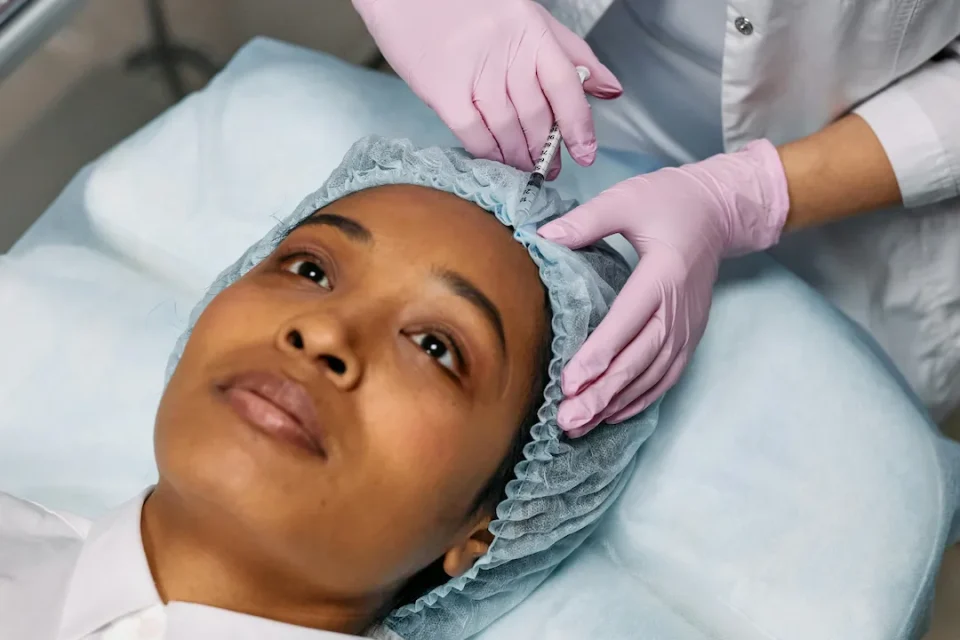
The Long-Term Benefits of Botox
Botox, made from the protein botulinum toxin, has become a popular treatment among the cosmetic and medical community. In 2022 alone, clinicians performed more than 9 million botulinum toxin procedures — a 26.1% increase from the previous year. Various factors are behind this growth, but chief among them is that many people realize that Botox can provide desired results in the long term, as opposed to other treatments.
How Does Botox Work?
When injected, Botox blocks the flow of chemicals from the nerves to the muscles, which prevents these muscles from moving and softens and relaxes the skin. This treatment is most commonly used to treat wrinkles caused by muscle movement, mainly where areas in the face move the most—even involuntarily. For example, frown lines, crow’s feet, and forehead lines are common wrinkles that appear over time just from basic facial expressions people make throughout the day.
How Botox Provides Long-Term Results
Although you can use Botox in a singular treatment, the best results come from continual, long-term use. Over time and regular treatments, botulinum toxin can accumulate in the muscles, reducing the appearance of wrinkles. You may even notice that you can go longer between follow-up treatments over time since the remnants of botulinum toxin prevent your facial muscles from moving. Hence, these wrinkles aren’t likely to reappear after the botulinum toxin builds up.
The Long-Term Benefits of Botox
Unlike other cosmetic procedures, Botox has various applications — from physical and emotional health to overall well-being. If you use Botox over time, you may notice the following benefits.
Wrinkle Prevention
If you’re in your 20s or 30s, regular Botox use can also prevent new wrinkles from appearing since it prevents you from using the muscles that eventually cause these wrinkles. Even past this age, you can train your facial muscles to prevent future wrinkles from appearing.
Migraine Reduction
Not everyone seeks out Botox for aesthetic purposes. The FDA also approved Botox for patients to handle chronic migraines. Since its approval in 2010, study after study has proven that the long-term use of Botox and other botulinum injections reduces the number of headaches patients receive in a month, dramatically improving their well-being.
This is because the botulinum toxin protein minimizes the flow of inflammatory neurotransmitters and proteins that cause migraines and headaches. Typically, patients will receive injections in their forehead, temples, the back of their head, upper neck, and shoulders every 12 weeks.
Sweat Reduction
Everyone sweats. However, some people sweat more than others, which doctors diagnose as hyperhidrosis, a condition where the sweat glands overcompensate, causing embarrassment and discomfort. Botox has been particularly effective in long-term injections by blocking nerve signals that stimulate the release of sweat in your sweat glands. Even after one use, you can expect relief for six months. People who have used this treatment through long-term use have found their sweating was reduced by 85%, significantly improving their overall well-being.
Better Skin Elasticity
Even though Botox mainly targets a specific area or muscle, it can also make your skin look better overall and more elastic. Although researchers are still studying the reasoning behind this effect, some theorize that Botox helps the body produce more collagen and elastin, which both help the skin appear younger-looking. Others think Botox relieves muscle tension, which is often responsible for making the skin stiffer and less elastic. Although the elasticity only remains as long as the other effects of Botox, it can last longer through continual use.
Improved Self-Confidence
All the effects mentioned above help your overall well-being and help you feel more confident and secure in yourself. If you’re less focused on your insecurities or health, you have more mental bandwidth to focus on other areas of your life. Essentially, you can focus on being happier.

Does Long-Term Botox Use Have Side Effects?
Like any other cosmetic treatment or medical procedure, Botox has side effects. Immediately after receiving Botox injections, you can expect mild swelling and redness in the affected area, which will die down within a day.
In the long term, Botox has been considered generally safe. However, the FDA warns that botulinum toxin can spread to other areas of the body, which may affect other muscle groups. This can cause feelings of weakness, blurred vision or weak eyelids, changes in voice, and potentially involuntary swallowing. If you experience these symptoms, contact a physician immediately. However, these effects are unlikely to happen as long as your practitioner uses the recommended dosage of Botox.
In addition, some people can build a resistance to Botox after repeated use when their bodies start creating antibodies to defend against the botulinum toxin proteins. You can avoid building resistance if your practitioner discourages you from using a high dosage for as long as possible.
Botox vs. Other Anti-Aging Methods
If you’re not seeking out Botox for medical reasons but rather for anti-aging purposes, you must compare it to other anti-aging alternatives. However, your choice between injectables and other cosmetic treatments for aesthetic appearance may depend on your desired result and your commitment.
Botox vs. Fillers
Fillers are injectable gels that bind to the water molecules in your skin to restore volume. Botox and fillers are often confused with one another, and for good reason — they can both plump the skin after use. However, while Botox can be suitable for some tasks, it may not be suitable for tasks that fillers can handle. Essentially, you can use fillers for any volume loss from wrinkles deeper than what Botox can address. Botox, however, is better for preventative use.
Your choice may also depend on your commitment to the change. You can’t remove Botox, but you can always remove filler by dissolving it with an additional injectable enzyme.
Botox vs. Microneedling
Microneedling, like Botox, directs your body to produce more collagen and elastin after inflicting minor trauma on the top layer of the skin with microscopic needs. Both Botox and microneedling can make your skin more elastic and youthful-looking. However, practitioners use microneedling for more superficial damage like scars, large pores, and acne. It’s often less abrasive than Botox, though. Botox may have longer-lasting results, and it addresses wrinkles that are more established in the skin since it specifically targets the muscles.
Botox vs. a Facelift
A facelift is a more intense process than Botox, and as such, it has longer-lasting results. Its effects last up to 10 years. It involves surgically removing excessive skin on your face and tightening the remaining skin. Facelifts aren’t as great for preventative measures as Botox. Although recovery time is longer than Botox, facelifts may be better for those who want to address their wrinkles with dramatic results. Botox, on the other hand, is more subtle.

Where to Get Botox in Detroit
The benefits you receive from Botox are only as good as the practitioners who provide the treatment. One of our reputable practitioners here at Théia Aesthetics in Detroit will explore a treatment plan that suits your goals and needs, and they’ll also do so in a safe and healthy environment. To find the right practitioner, look at before-and-after photos, read patient reviews, and speak up at your consultation. By doing so, you’ll be happier with your results.
Botox is only growing in popularity, and due to its varied benefits, it’s not likely to stop any time soon. As long as you do your research beforehand, you can enjoy these benefits and watch your well-being improve as a result.
FAQs About the Long-Term Effects of Botox
How Long Does It Take for Botox to Show Results?
Botox typically begins to show visible results within 3 to 5 days after treatment, with the full effect usually apparent after 10 to 14 days. Individual results may vary based on the treatment area and the individual’s response to Botox.
Is There Any Downtime After Botox Injections?
There is minimal to no downtime required after Botox injections. Most individuals can return to their normal activities immediately, although it’s recommended to avoid strenuous exercise for 24 hours following the procedure.
How Often Should I Get Botox Treatments?
The effects of Botox typically last between 3 to 6 months. Regular follow-up treatments are recommended every 4 to 6 months to maintain the desired results, although this can vary based on individual factors.
Can Botox Be Used to Treat Conditions Other Than Wrinkles?
Yes, besides its cosmetic uses for reducing the appearance of wrinkles, Botox is also FDA-approved to treat several medical conditions, including chronic migraines, excessive underarm sweating (hyperhidrosis), overactive bladder, and certain muscle spasm conditions.
What Are the Risks or Side Effects of Botox?
While Botox is generally safe, potential side effects can include temporary bruising, swelling at the injection site, headache, or, in rare cases, drooping eyelids or eyebrows that return to their natural position within a few months. Serious side effects are rare but can include difficulty breathing or swallowing, which requires immediate medical attention.
Can Anyone Get Botox?
Most adults in good health can receive Botox treatments. However, it is not recommended for individuals who are pregnant or breastfeeding, have a neurological disease, or are allergic to any of its components. A consultation with a healthcare provider is necessary to determine if Botox is safe for you.
Does Botox Training Wear Off With Long-Term Use?
With long-term use, some individuals may find that the duration of Botox’s effects extends, requiring less frequent treatments. However, this varies by individual and should be discussed with a healthcare provider.
Will My Face Look Natural After Botox?
When administered by a skilled and experienced professional, Botox should result in a natural-looking reduction of wrinkles, maintaining natural facial expressions. The key is to use the correct amount of Botox and place it precisely in the targeted muscles.
Is It Possible to Reverse Botox Effects?
The effects of Botox are not reversible, but they are temporary. If you experience any unwanted results, they will typically wear off within 3 to 6 months as the Botox effect gradually diminishes.
Can Botox Prevent New Wrinkles From Forming?
Yes, by relaxing the facial muscles, Botox can prevent the formation of new wrinkles in the treated areas, making it an effective preventative measure against certain types of wrinkles.

